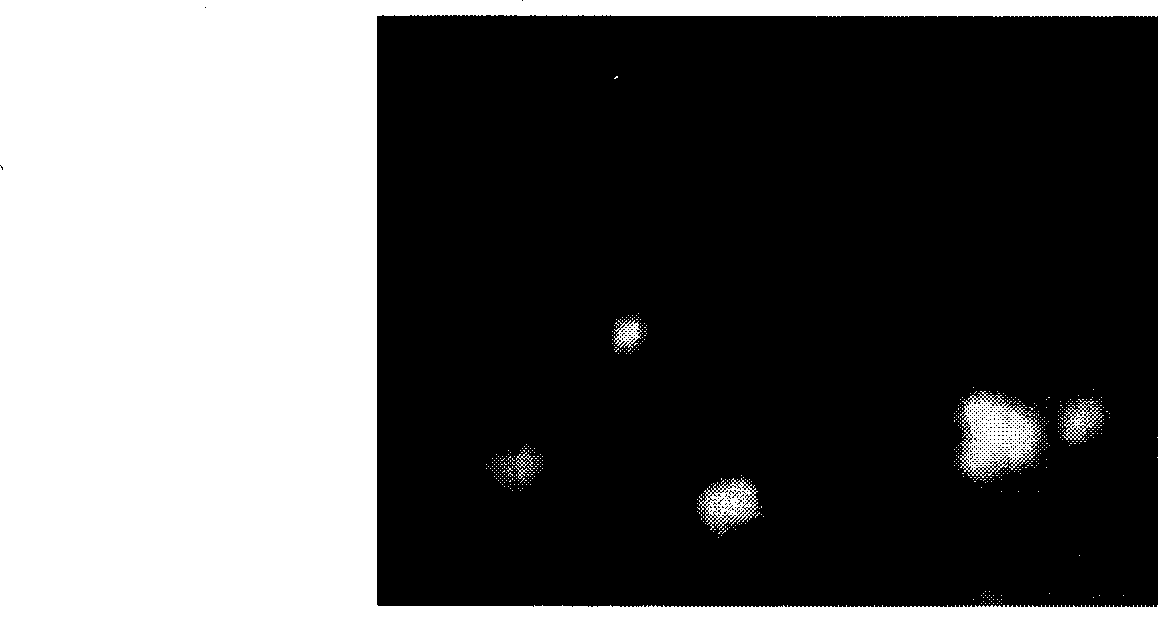Method for detecting microbial population in sediment by fluorescent in situ hybridization technique
A fluorescence in situ hybridization and technical detection technology, which is applied in the field of detection of microbial populations in sediments by fluorescence in situ hybridization technology, can solve the problems of incomplete hybridization, increased non-specific coloring, non-specific hybridization, etc., to weaken autofluorescence and eliminate The effect of non-specific hybridization
- Summary
- Abstract
- Description
- Claims
- Application Information
AI Technical Summary
Problems solved by technology
Method used
Image
Examples
Embodiment 1
[0065] Example 1: Collection of sediment samples.
[0066] Collected in April 2006 from one sampling point (No. 2: N31°30.306', E120°13.370') of Taihu Lake Meiliang Bay and one sampling point (No. 5: N31°23.767', E120° 19.471'). On-site use a columnar sampler to collect 30cm of surface sediment, one sample per 1cm for the first 10cm, one sample per 2cm for the first 10-20cm, and one sample for every 5cm below 20cm, put them into sealed bags and label them, and store them in the refrigerator.
Embodiment 2
[0067] Example 2: Cleaning and coating of slides.
[0068] The slide cleaning procedure is as follows:
[0069] (1) Soak the slide in soapy water overnight;
[0070] (2) After rinsing with tap water, rinse with distilled water and soak;
[0071] (3) Rinse with distilled water after soaking in 1% HCl for 24 hours;
[0072] (4) After high-temperature sterilization for 20 minutes, store in the refrigerator at 4°C until use;
[0073] The slide coating steps are as follows:
[0074] (1) Soak the glass slides vertically placed on the slide rack in a mixture of APEs and acetone at a volume ratio of 1:50 for 1 min;
[0075] (2) Move the frame to acetone and drain it back and forth several times;
[0076] (3) Oven-dried at 37°C, stored in a slide box, and can be stored for 1 year.
Embodiment 3
[0077] Embodiment 3: Detection of samples.
[0078] For all the sediment samples collected in Example 1 at the two points, fluorescence in situ hybridization (FISH) technology was used to detect specific microorganisms. The specific operation is as follows:
[0079] (1) Pretreatment of sediment samples:
[0080] (1a) Take 0.2g sediment sample in a centrifuge tube, centrifuge (14000rpm refrigerated centrifugation for 10min), and remove the supernatant;
[0081] (1b) Add 1mL PBS buffer solution, mix thoroughly, centrifuge (14000rpm refrigerated centrifugation for 10min), and remove the supernatant;
[0082] (1c) repeat step (1b) 3 times;
[0083] (1d) Add 1mL of 4% paraformaldehyde fixative solution, mix well, then add 1mL of 0.2mol / L HCl, mix well, after overnight at 4°C, centrifuge (14000rpm refrigerated centrifugation for 10min), and remove the supernatant;
[0084] (1e) Add 1mL PBS buffer solution, mix well, centrifuge (14000rpm refrigerated centrifugation for 10min), an...
PUM
 Login to View More
Login to View More Abstract
Description
Claims
Application Information
 Login to View More
Login to View More - R&D
- Intellectual Property
- Life Sciences
- Materials
- Tech Scout
- Unparalleled Data Quality
- Higher Quality Content
- 60% Fewer Hallucinations
Browse by: Latest US Patents, China's latest patents, Technical Efficacy Thesaurus, Application Domain, Technology Topic, Popular Technical Reports.
© 2025 PatSnap. All rights reserved.Legal|Privacy policy|Modern Slavery Act Transparency Statement|Sitemap|About US| Contact US: help@patsnap.com



